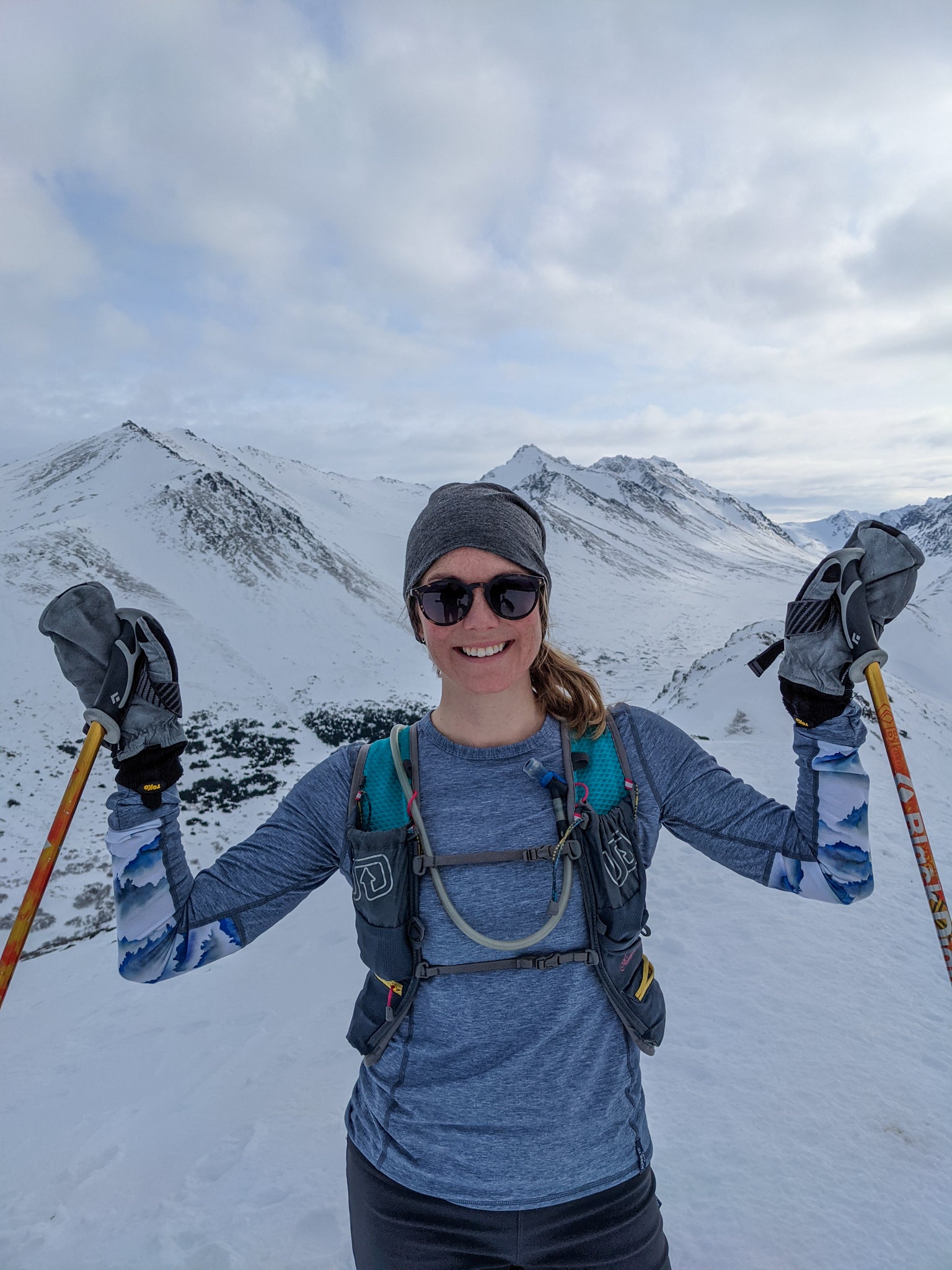Spring is upon us, as they say, and it’s time to shift gears. Up here in Alaska the temperatures transition above freezing and we wait for ‘breakup’ when certain rivers and lakes will start to lose their ice. It’s a season of pairing down, but not too much. Arctic winds can still freeze fingers and a snowstorm in April is not unheard of. I often start a little cold but finish a little warm and sweaty, nailing the layers is difficult. But hey, at least we’re running in the daylight now…
Headwear
A thin hat is all you need and I am usually in a headband. Depending on your mood and comfort level with the temperature outside, a lined headband (fleece or merino) can be perfect. Later in spring, an unlined headband or nothing at all. If you hike or run with a backpack, these are easy to throw in the bottom or a chest pocket for use as needed. I’ll also wrap it around my wrist if I don't have a backpack. The morning darkness after daylight savings necessitates a headlight if running early in the morning but this quickly wanes.
Handwear
No more thick gloves for me. In our collection of gear at home we have some awesome La Sportiva gloves that have a mitten conversion. On a one-hour run, I’ll often start with mittens, transition to gloves after 20 minutes, and finish the last third with the gloves in my pocket. Recently I discovered WhitePaws RunMitts, a handy thumbless running mitten that flips open and can slide up your forearms as cuffs when not needed. Lately, these are my go-to for Spring runs. One-size-fits-all gloves are an easy option but are a bit thick and sweaty and do not pack well.
Tops
At around 30 degrees Fahrenheit there are 2 options that work well. One, a long sleeve with a vest or t-shirt over top or a long sleeve under a windbreaker. I recommend the latter if there is any wind from the North. Temperatures above this are comfortable in just your long sleeve, and below this keep the windbreaker. Lined jackets are rarely necessary and are a guaranteed sweat-fest; don’t rely on the breathability of your soft-shell, it isn’t enough. Conversely, a backpack is often enough to count as a second layer. Best to get comfortable starting just a little cold while anticipating delayering as core temperature increases.
Bottoms
I’ll run in shorts in anything nearing 40F+ in the interest of staying cool. With colder temps I’ll wear either running tights, bushwhacking leggings, or thin cross-country ski pants. I do have a pair of longer shorts that cover more of the thigh that I enjoy before using my ‘fast’ side-slit shorts. Cold air will certainly cause cramping of the large muscles of the thigh if you are not careful. You can also pair shorts with tall socks for transition temps.
Footwear
This is trail dependent, and sometimes I’ll bring several options in the car, just in case conditions require adjustment. Warmth is rarely an issue so regular socks are fine. Shoe options include regular (running or hiking) shoes, studded shoes, or a combination with micro-spikes. If available, regular shoes should have big lugs to navigate snow or mud. The melt-freeze cycle on local well-used trails can often require studs if not spikes, depending on the ground cover. Early season on my local trails is often well-suited to micro-spikes. They can also be stored in a backpack just in case but be warned they tend to be heavy and bounce around a bit.
For unexpectedly cold days see also our Winter Layering blog
Gear Checklist:
Alpine Fit lightweight Merino Wool Hat
Alpine Fit Merino Wool Lined Headband
Alpine Fit unlined headband
La Sportiva gloves (with mitten conversion)
Alpine Fit long sleeve top (Rendezvous Ridge or Treeline)
Light and packable Windbreaker
Running tights
Alpine Fit Bushwhacking Leggings
Cross Country Ski Pants
Trail running shoes with big lugs/deep tread
Icebug studded trail running shoes



